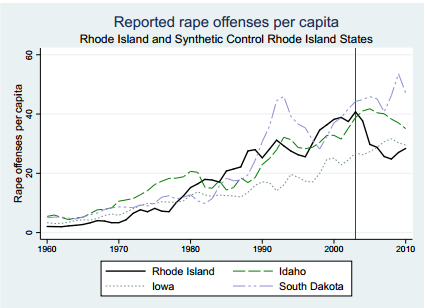Liberia had only 50 physicians for the whole country before the [Ebola] epidemic
I learned this awful fact (which perhaps I would have known already, had I been following the response to Ebola more closely) from Mead Over. He suggests that the best way to fend off the next Ebola epidemic may be to shift the monitoring of disease outbreaks from passive detection clinics to active monitoring by teams who go out and test everyone.
Other sources disagree on exactly how many doctors Liberia had pre-Ebola. In this piece from back in August, Dr. Frank Glover states that there were actually 200 doctors in Liberia before the epidemic – and that 150 left after the initial outbreak.
To put this figure in context, Liberia is a country of 4 million people. According to healthgrades.com, it has about the same number of doctors as Battle Creek, Michigan, a smallish town (pop. 52,347) best solely known for making breakfast cereal. The standard way of counting how many doctors a country has, relative to its overall population, is the number of physicians per 1,000 people. On the World Bank’s page showing this number for different countries by year, the only entry for Liberia, from 2010, is “0.0”. The rate is less than the rounding error in the table.
This awful fact prompts three thoughts:
1. Over’s argument that we should look for alternative ways to address Ebola (and other similar disease outbreaks in the future), without relying on strengthening overall healthcare systems, is very compelling. Yes, it would be nice to achieve solid gains in general healthcare on the back of international concern about Ebola. But that doesn’t seem like a realistic solution to this problem. We are talking about a place with nearly no health system to strengthen. Moreover, this outbreak has horribly weakened what system there was. Doing better, cheaper monitoring could help stave off the next such disaster for Liberia’s healthcare system – or that of another African country.
2. The elasticity of physician labor supply with respect to disease risk is enormous, if we take Glover’s comments at face value. Such a large response might be totally rational – while Ebola is not easy to catch from casual contact, doctors could have reasonably feared they’d be pressed into service treating Ebola patients with totally inadequate supplies and training, which is exceedingly risky. If developing countries want to retain their physicians, they should focus on supporting them rather than trying to make it illegal to leave.
3. Liberia is not the only country that has such a massive healthcare deficit. That World Bank table lists 10 countries whose latest rate of doctors per 1,000 is too low to register. All are in sub-Saharan Africa. It is not surprising that countries with essentially no doctors experience high rates of transmission for diseases that are basically only spread from patients to those taking care of them. In the long term, it is incredibly important to address the physician deficit, not just in West Africa but in worldwide.


